02.05.2022
Always energized
Dr. Mark Eberspächer has always been fascinated by high-frequency technology. The development engineer continued his research in this area and came across a new product which could solve many problems in industry. His team is now bringing this product to market maturity.
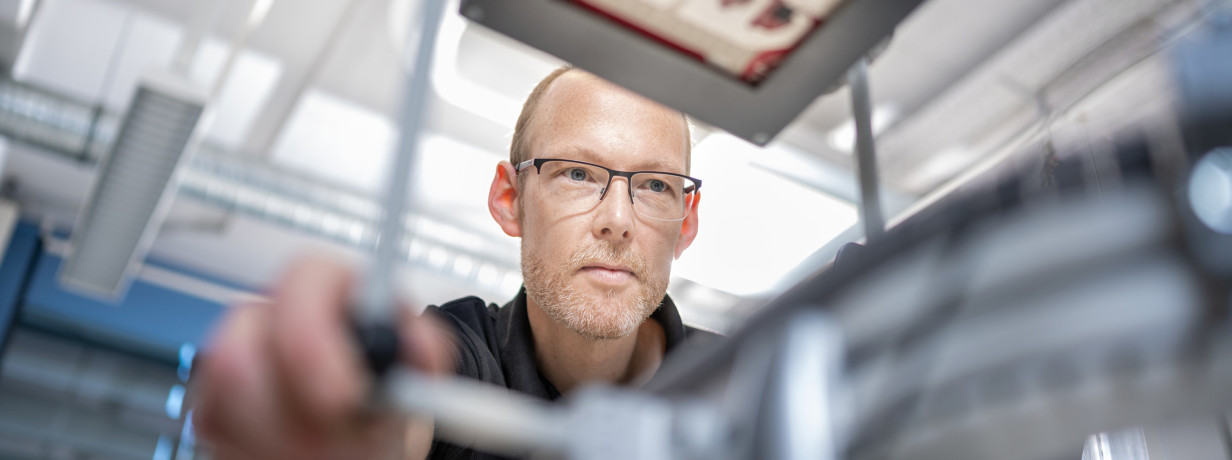
At this time, Balluff’s main building in Neuhausen is almost empty. The multi-story car park sign indicates 534 vacant parking spaces. In the Innovation Department on Level 3, four out of the twenty-two employees are present, the remainder are working on a mobile basis and seven others are at the plant in Hungary. To the right of the entrance is a coffee machine in which the type of coffee is determined by means of a sensor through vibration during grinding of the coffee beans – an artificial intelligence test unit. In the cabinet on the left, a sensor indicates when the milk cartons are empty. And in the middle of all this stands the invention of Dr. Mark Eberspächer and his team. Eberspächer is a development engineer and holds the position of strategic incubation manager. Together with his colleagues, he is a member of of one of the five active Strategic Incubation Programs (SIPs) at Balluff. SIPs are incubation programs which quickly and agilely develop new business ideas in the manner of a start-up.
Since March 2022, Eberspächer has also held the professorship in high-frequency engineering at the Würzburg-Schweinfurt University of Applied Sciences.
One of these business ideas is the radar scanner of the SIP headed by Eberspächer. As the captain, he is responsible not only for the new development from technical aspects, but also for the “bigger picture”: “The objective is to create a profitable, scalable business model from this innovation,” he said.
I have always been fascinated by electricity. In the past I purchased a book on antenna technology. Although I didn't understand very much about the subject, I definitely knew: I would understand it at some time.
Dr. Mark Eberspächer, Development Engineer and Strategic Incubation Manager
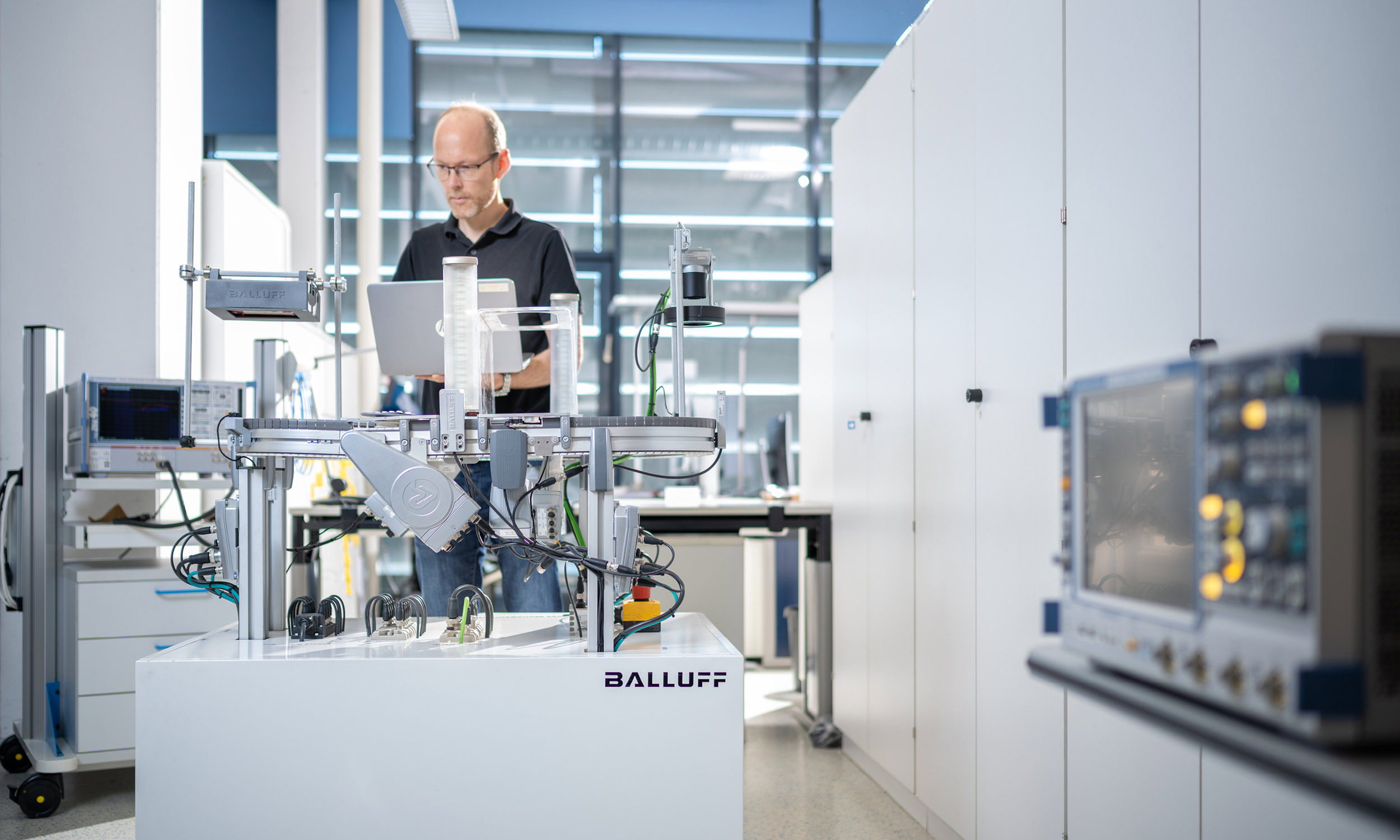
Although innovation is now an over-used word, it really applies to this development because the technology on which it is based is totally new in the industrial sector. Eberspächer and his team are working on a radar scanner which can look through certain materials with the aid of microwave technology and therefore detect the contents of repackaging. “Our product is basically the pendant to a body scanner at airports,” said Eberspächer. People may vaguely remember: Anyone traveling by air in Europe had to stand in a box in a certain position before boarding the aircraft. “In the past this was a simple metal detector which identified a knife or a pair of scissors, for example. However, there are also ceramic products: A metal detector was unable to identify them. Microwave technology was needed.” People may be familiar with the process from remote sensing when, for example, satellites orbit the earth and produce pictures (called Synthetic Aperture Radar, SAR for short). However: It had not been used to date in industry. Up until now.
Microwave technology is a high-frequency technology – Eberspächer’s hobbyhorse. Even as a 16-year-old, he was tinkering with a Tesla generator. “I have always been fascinated by electricity. In the past I purchased a book on antenna technology. Although I didn’t understand very much about the subject, I definitely knew: I would understand it at some time.” He then did an apprenticeship as a communication electrician, followed by a degree at Stuttgart University with a semester abroad in New Zealand. The subject of this doctoral thesis at Munich Technical University was meta materials which are able to make objects invisible. In 2013 he joined Balluff as a development engineer for microwave sensors and developed, for example, distance and level sensors, coating thickness sensors, and antennae for communication purposes over the course of time. After he joined an expert program in the company in 2017, his idea to use an imaging process in our industry gradually took shape.
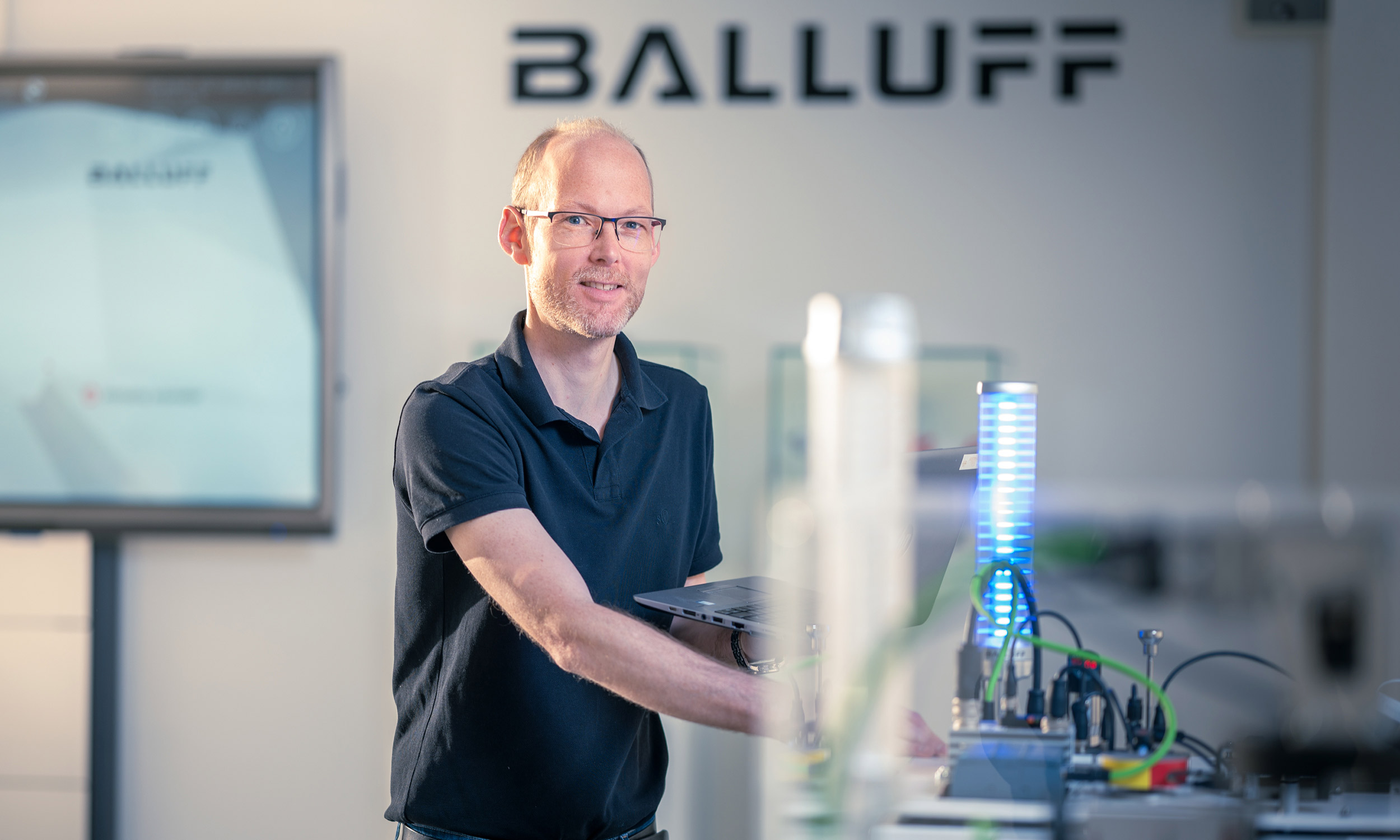
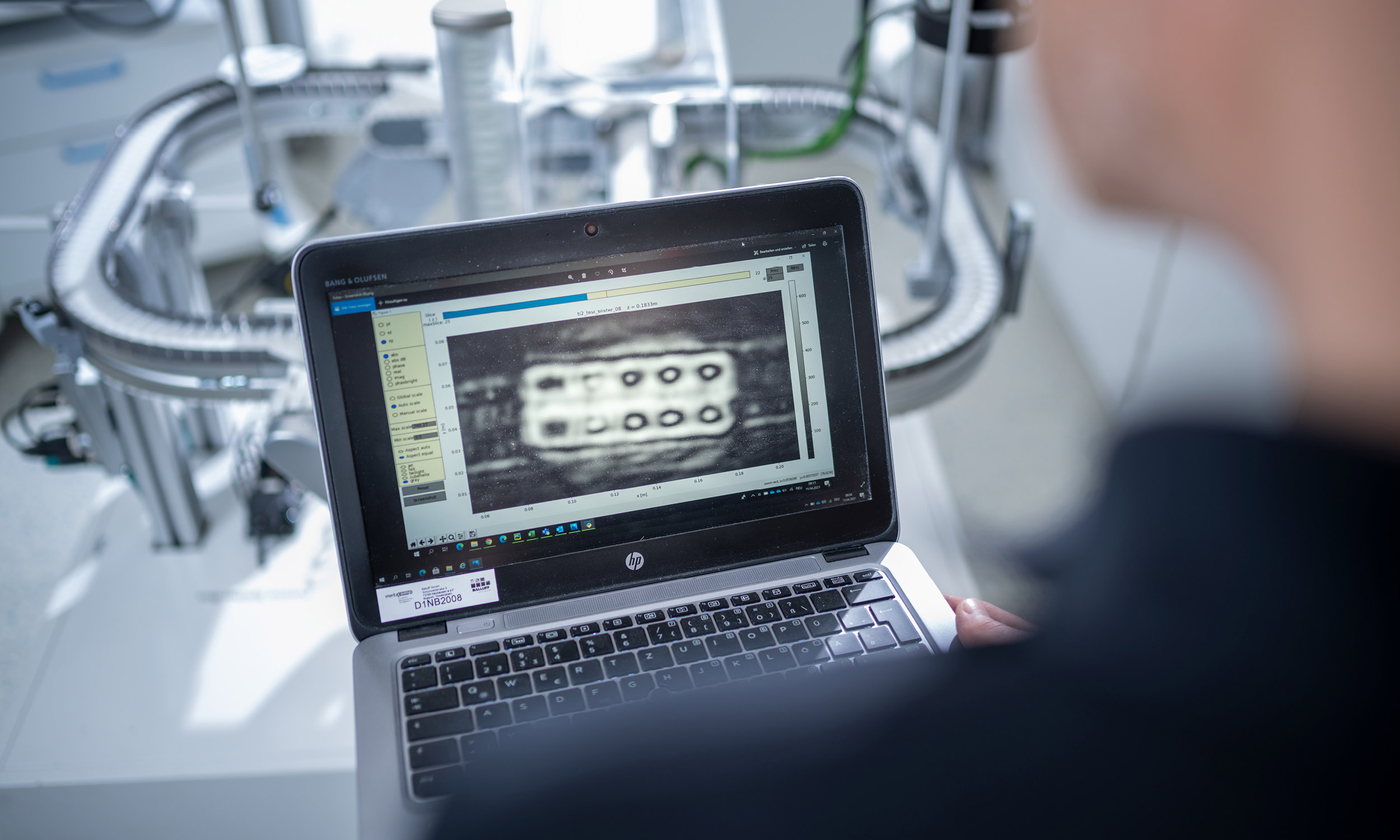
“In this technology signal processing is used for focusing. This means that a sharp image of moving objects is generated from a large volume of data,” explained Eberspächer. He is standing in the Innovation Department close to a small conveyor belt on which a blister pack containing medicaments is going round in circles. At first glance, the blister pack appears to be intact. In one place it travels underneath a scanner, a rectangular electronic line. “The packaging is continuously illuminated. The scanner generates images which are transmitted to a computer. Software, which extracts certain characteristics, runs on this computer,” added Eberspächer. Evaluation then takes place on another computer.” The blister pack is displayed on the screen as an image which shows that medicaments are missing in the packaging itself. “Defects in the packaging or even missing contents can therefore be detected. The principle can be transferred to a large number of different applications.”
Questions inevitably arise during a conversation with Mark Eberspächer. Tesla generators, high-frequency technology, meta materials, synthetic aperture – what do they all mean? The 41-year-old quickly clears up this confusion.
Questions inevitably arise during a conversation with Eberspächer. Tesla generators, high-frequency technology, meta materials, synthetic aperture – what do they all mean? The 41-year-old quickly clears up this confusion. He has been carrying out research into high-frequency technologies for many years. That’s simply his passion. He calmly explains all this. His voice contains slight traces of his home town Frickenhausen, close to the edge of the Swabian Alb.
Eberspächer and his team have long impressed potential customers with the radar scanner, which still does not have an official name. Numerous discussions are now being held, for example, with food manufacturers and packaging companies. “The response is overwhelming. Although the product is completely new in the industrial environment, the problems already existed,” said Eberspächer. “Fault detection in production, for example, is a sore point for many customers and very expensive for them. Let’s take a damaged sealed seam as an example: Due to the damage, food packaging is no longer airtight and the contents are spoiled. Our scanner can detect this. The product therefore really solves problems because it detects faults at the start of the packaging process and the goods are not actually put into circulation.”
Eberspächer and his nine-strong team – comprising five developers and four temporary support employees from business development – carry out tests in Neuhausen with material sent by potential customers. “It is a continuous process which involves performing tests, obtaining feedback and carrying out further development work. This agile working method is a great benefit for us here.” The team is the decisive factor because such a new development is a complex task. “Every member of the team contributes their strengths. Technical expertise is naturally important, but it’s more a question of helping and motivating each other. And this works really well,” said Eberspächer. The project enjoys wide support from all areas, both inside and outside the company. In the area of machine vision the team cooperates with experts from Matrix Vision in Oppenweiler. “You cannot handle this type of project on your own. You need a strong team and collaboration. I am very proud of what we have achieved together to date.”
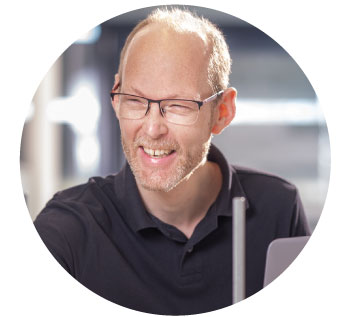
It is clear that Eberspächer is a “live wire” – and not just in relation to high-frequency technology. He is a real innovator. Both in the company or at home on his Massey-Ferguson tractor which he bought to manage a recently acquired fruit orchard. When he’s not dealing with pill packaging, he devotes his time to cherries, apples and damsons. And also, naturally, his family. He lives with his wife and three children (ages 4, 6 and 8) at the foot of the Hohen Neuffen Castle, where he also grew up.
Eberspächer is an attentive and friendly person who loves working in a team. In addition to development work, his focal point now is team management. “Every member of the team has their own way of working: Some appreciate the continuous discussions while others prefer to work for a week in peace and quiet. This works well in the SIP.” The next milestone is discussed every five weeks. And Eberspächer? He always stays on the ball and never gives up. That was also the case with the book on antennae, which he purchased as a 16-year-old. He now understands the technology behind it. And it will also undoubtedly be true with his radar scanner. There is certainly no shortage of other ideas. “Every additional feature of the product requires a new invention.” They are in good hands with Mark Eberspächer and his team.
From Balluff to the lecture hall
With years of practical experience, Eberspächer took over the professorship in high-frequency engineering at the Würzburg-Schweinfurt University of Applied Sciences on March 1, 2022. Balluff supported Eberspächer in this step and offered the electrical engineer, who holds a doctorate, an employment relationship that makes further cooperation possible alongside the university. "I am very happy about this opportunity," explains Eberspächer. In his new role, Eberspächer will take over the courses in high-frequency engineering, theoretical electrical engineering, electrodynamics and fundamentals of electrical engineering, in addition to managing the microwave engineering laboratory. "I clearly see a win-win situation here for research and practice. I can and would like to incorporate many of the findings from research and development at Balluff into my work at the university. In return, I bring impulses from the university into practice," says Eberspächer.
